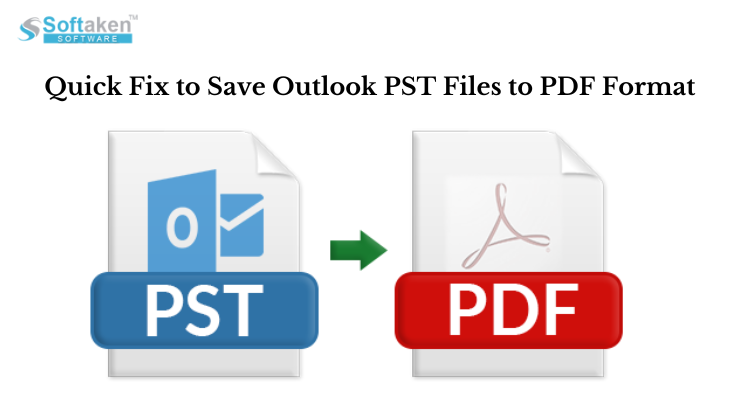Introduction: In the realm of virtual conversation, Microsoft Outlook has been a stalwart, serving as a hub for coping with emails, contacts, and calendars. However, as the volume of records inside Outlook’s PST (Personal Storage Table) files grows, clients are often in search of methods to simplify and streamline their information for diverse functions. One effective method is the conversion of PST emails to PDF documents. This article will delve into the reasons behind this conversion, the blessings it offers, and the handy techniques to gain it.
Why convert PST files to PDFs?
- Universal Accessibility: PDF (Portable Document Format) is a universally regular layout, ensuring that your records remain to be had in some unspecified time in the future of several structures, devices, and applications. This compatibility removes issues with approximately record compatibility while sharing or archiving information.
- Efficient Archiving: PDFs are famed for their capacity to compress large portions of information without compromising super. Converting PST files to PDF format permits green archiving, lowering storage area at the same time as maintaining the crucial content fabric.
- Data Preservation: PDF format preserves the actual formatting and form of the content cloth inside the PST report. This is crucial for maintaining the integrity of emails, attachments, and one-of-a-kind factors even as you transition from Outlook to a special platform.
- Security Considerations: PDFs offer strong protection functions, allowing users to encrypt and password-shield their files. This is particularly terrific at the same time as handling sensitive information contained in PST files, making sure that the most effective legal human beings can get entry to the records.
- Easy Sharing and Collaboration: PDFs simplify the sharing of records. Colleagues, users, or collaborators can without problems view, print, or comment on the content material without the need for particular e-mail programs or systems.
Effortless Methods for PST-to-PDF Conversion:
Manual Method Using Print Functionality:
- Open the preferred email in Outlook.
- Under the “File” menu, select “Print.”
- Choose a PDF printer or Microsoft Print to PDF as the printer desires.
- Click “Print” to generate a PDF version of the email.
Note: This technique is appropriate for individual emails but can additionally grow to be impractical for bulk conversions due to its manual nature.
Professional PST-to-PDF Converter Software:
Utilizing committed PST to PDF converter software streamlines the conversion process for bulk records.
A device like the Softaken Outlook to PDF Converter Application offers a consumer-first-rate interface, permitting clients to export/print PST emails to PDF with only a few clicks. The software program application guarantees the protection of e-mail attributes, folder hierarchy, and attachments at some unspecified time in the future of the conversion approach.
It enables batch conversion, permitting clients to convert multiple PST files to PDFs concurrently. This specialized software program software utility is distinctly advocated for clients handling a large extent of facts and supplying performance and accuracy in the conversion device.
Lasting Thoughts,
Simplifying your information by changing PST documents to PDF layouts is a strategic flow for stronger accessibility, statistics upkeep, and inexperienced collaboration. Whether you pick the guide technique, the usage of print functionality for man or woman emails, or the leveraged PST to PDF converter software program for bulk conversions, the advantages are sizeable.
The everyday recognition of PDF layout guarantees that your data stays to be had at some point in various systems, fostering seamless conversation and collaboration. Additionally, the safety capabilities inherent in PDFs guard your records, making them a splendid choice for managing touchy statistics.
In the end, the safe conversion of PST emails to PDF layout now not only simplifies statistics manipulation but also opens up new possibilities for green archiving, sharing, and collaboration. Choose the technique that aligns collectively with your particular desires and experience the convenience of a streamlined statistical transition.
